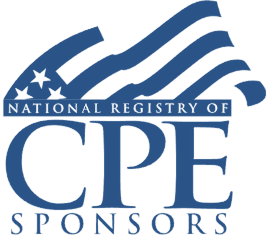Welcome! Save 30% on all CLE, CPE, and Professional Skills webinars, plus 15% off any annual pass with code CYBER2025
About the Course
Introduction
This course will review significant differences affecting a broad range of financial statement areas, comparing, and contrasting the requirements in accordance with generally accepted accounting principles (GAAP) versus International Financial Reporting Standards (IFRS) for accountants preparing financial information under either or both standards.
Description
Over 144 jurisdictions require the use IFRS for all or most companies, while entities in the United States predominantly apply GAAP. There are similarities and substantial differences between these reporting methods. Recent standard setting has often sought to align the two bases of accounting, but there are differences including in the new lease standard, as well as the differences that have existed for a while related to inventory, fixed assets and stock-based compensation to name just a few. These differences can substantially alter the financial results reported.
For those adopting IFRS for the first time, IFRS 1, First-Time Adoption of International Financial Reporting Standards, provides guidelines for preparing a company's first IFRS-based financial statements. This challenging process requires applying IFRS principles retroactively, with few exceptions. There are many unique disclosure requirements for the initial IFRS statements as well.
Preparing compliant financial statements under two sets of guidelines is a complex process for practitioners who thoroughly understand IFRS and GAAP reporting requirements. U.S. multinational investors, cross-border companies, and anyone wanting to be able to interpret non-U.S. financial statements need to be able to compare these financial statements as well.
Listen as our panel of international reporting experts identifies key balance sheet, income statement, and disclosure differences in U.S. GAAP and IFRS to enable CPAs to comply with these standards and allow multinational investors to better analyze financial statements.
Presented By

Mr. Lackey has over 6 years of experience in accounting and assurance for clients of all sizes. He currently serves as part of the Financial Reporting Advisory Services team. In this role, Mr. Lackey assists companies with the analysis, documentation, and implementation of complex accounting issues, including liaising with management and the client’s external auditors on these issues to help reach a resolution.

Mr. Moore's primary focus is IFRS related work including reviewing IFRS financial statements and reporting packages and completing consulting engagements, including IFRS conversions projects.
-
BARBRI is a NASBA CPE sponsor and this 110-minute webinar is accredited for 2.0 CPE credits.
Date + Time
- event
Tuesday, May 16, 2023
- schedule
1:00 p.m. ET./10:00 a.m. PT
- Converting from U.S. GAAP to IFRS and vice versa
- Critical differences in the balance sheet accounts
- Key differences in the income statement accounts
- Specific transaction-related differences
- Unique reporting and disclosure considerations
The panel will review these and other key issues:
- Specific countries adopting and not adopting IFRS
- Differences between IFRS and GAAP reporting of combinations and mergers
- Differences between the two leasing standard (ASC 842 and IFRS 16)
- First-time IFRS adoption requirements under IFRS 1
- Accounting for stock-based compensation
Learning Objectives
After completing this course, you will be able to:
- Identify specific reporting differences for leases under GAAP and IFRS
- Determine permitted inventory reporting methods under IFRS
- Ascertain when fair value revaluations are permitted under IFRS
- Decide when impairment losses are reported under GAAP vs. IFRS
- Field of Study: Accounting
- Level of Knowledge: Intermediate
- Advance Preparation: None
- Teaching Method: Seminar/Lecture
- Delivery Method: Group-Internet (via computer)
- Attendance Monitoring Method: Attendance is monitored electronically via a participant's PIN and through a series of attendance verification prompts displayed throughout the program
- Prerequisite: Three years+ business or public firm experience, preparing reviewed, compiled, and audited financial statements and the relative disclosures. Specific knowledge and understanding of GAAP, SSARS, and peer review policies.

BARBRI, Inc. is registered with the National Association of State Boards of Accountancy (NASBA) as a sponsor of continuing professional education on the National Registry of CPE Sponsors. State boards of Accountancy have final authority on the acceptance of individual courses for CPE Credits. Complaints regarding registered sponsons may be submitted to NASBA through its website: www.nasbaregistry.org.

BARBRI CE webinars-powered by Barbri-are backed by our 100% unconditional money-back guarantee: If you are not satisfied with any of our products, simply let us know and get a full refund. Contact us at 1-800-926-7926 .
Unlimited access to premium CLE courses:
- Annual access
- Available live and on-demand
- Best for attorneys and legal professionals
Unlimited access to premium CPE courses.:
- Annual access
- Available live and on-demand
- Best for CPAs and tax professionals
Unlimited access to premium CLE, CPE, Professional Skills and Practice-Ready courses.:
- Annual access
- Available live and on-demand
- Best for legal, accounting, and tax professionals
Unlimited access to Professional Skills and Practice-Ready courses:
- Annual access
- Available on-demand
- Best for new attorneys
Related Courses

Accounting for Income Taxes ASC 740: OBBBA Implications, Business Combinations, Valuation Allowances
Thursday, February 5, 2026
1:00 p.m. ET./10:00 a.m. PT

Form 990-PF: Meeting IRS Demands for Fiscal, Grant, and Other Data From Private Foundations
Friday, December 12, 2025
1:00 p.m. ET./10:00 a.m. PT

Impact of OBBBA and Recent Legislation on NPOs: Funding Cuts, Deductible Contribution Limits, New Scholarship Credit
Thursday, November 6, 2025
1:00 p.m. ET./10:00 a.m. PT

Identifying Lobbying and Political Activity for Nonprofits: Excluded and Allowed Activities
Thursday, December 4, 2025
1:00 p.m. ET./10:00 a.m. PT
Recommended Resources

Gain a Competitive Edge Through Efficient CPE Strategies
- Learning & Development
- Business & Professional Skills
- Career Advancement


